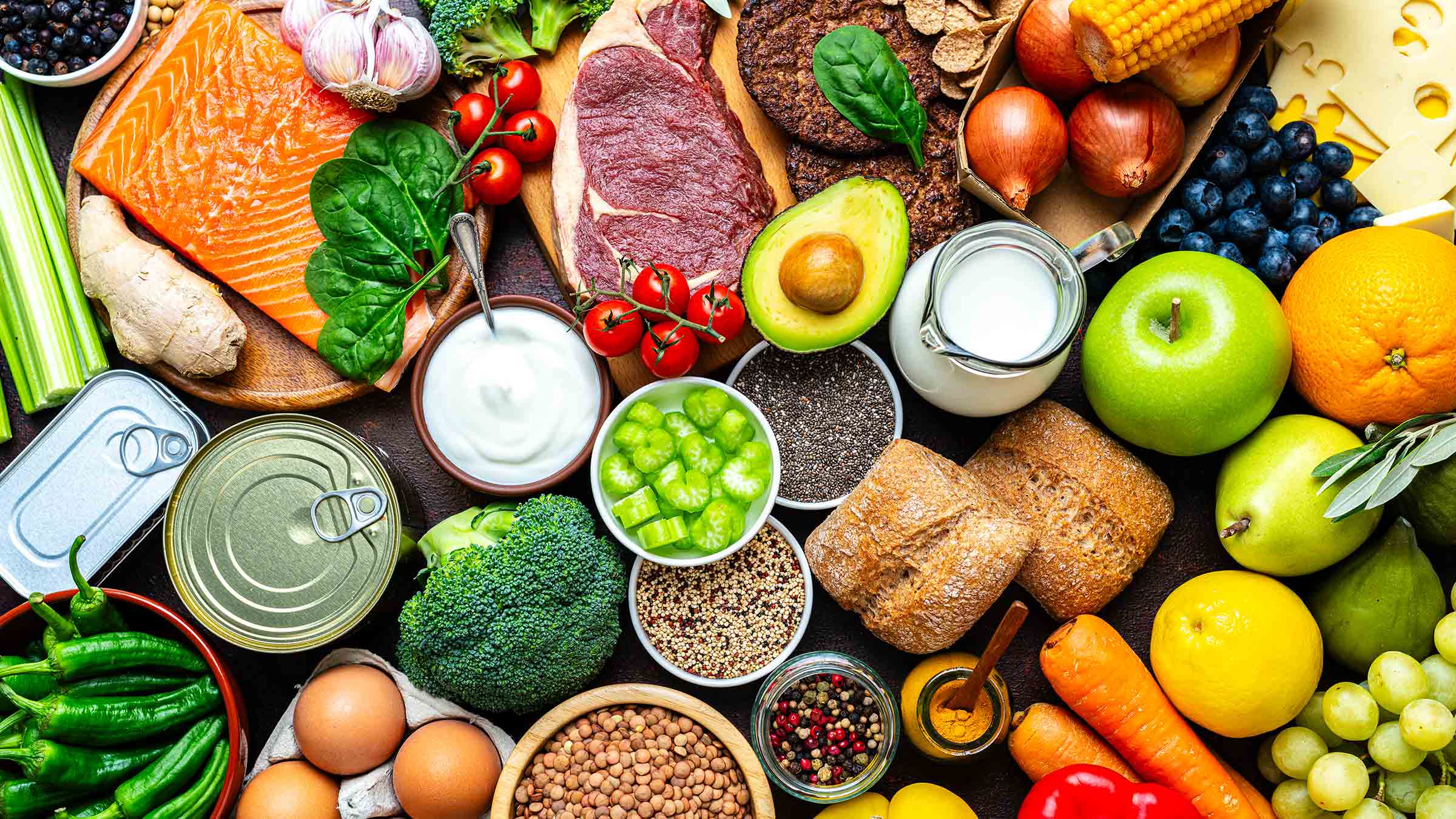
Life gets busy and meal prep can be time consuming, so it can be nice to have some food on hand that’s ready to go without too much extra effort. Ready-made foods can be convenient if you’re stretched for time but still want a balanced meal, but not all ready-made meals are made equally. Depending on the flavor you choose, the nutrition may vary; they can be highly processed and there may be high sodium, fat and/or sugar content. Here are a few dietitian-recommended ready-made foods.
Frozen vegetables, grains and beans
Frozen vegetables and grains are a quick and easy way to add more fiber and nutrients to your diet. Fresh or frozen are the best way to go with vegetables and grains or other starches. Brands like Green Giant, Bird’s Eye and Giant Eagle make frozen grains, bean and vegetable combos for a quick meal or side dish. Some examples include Green Giant carrot veggie spirals or Bird’s Eye grain and veggie mixes.
Bird’s Eye protein blends
These grain and veggie bowls are good option for a quick, high fiber meal in minutes. Most flavors provide less than 400 calories and around 20g of protein.
Bird’s Eye Steamfresh veggie pastas
These frozen veggie pastas are made from lentil flour and provide a good amount of both fiber and protein for a great base for any meal.
Eggland’s Best Hard-Cooked Peeled Eggs
A quick and easy protein that you can add to any meal. Eggs are affordable and tasty and provide a high-quality protein source, as well as other important nutrients. Pre-cooked eggs have zero work involved and can be added to salads, sandwiches or toast, or eaten alone.
Applegate chicken sausages
These pre-cooked sausages provide a great lean and tasty protein source that can be heated up quickly and easily added to any meal. These products are nitrite and nitrate free and made with strict manufacturing standards, including being antibiotic-free and humanely raised. At 150 calories per serving, these products also have an ingredient list of mostly chicken and spices.
Ready-made salad mixes and kits
Salad mixes provide a quick way to prepare healthy and delicious salads, without the slicing, chopping and peeling to prepare it. Salad kits have a variety of flavors that can include different green veggies like kale, Brussels sprouts and a variety of lettuce types, as well as nuts, fruit and flavorful dressings. Just add a quick protein and you have an easy, balanced meal.
Trader Joe’s frozen meals
Trader Joe’s has a variety of healthy, balanced frozen meals that are calorie and sodium controlled with wholesome ingredients. For example, Trader Joe’s vegetarian fried rice is a veggie-packed side dish that contains around 210 calories, with only 190mg of sodium. Add a quick protein for a complete meal. Trader Joe’s mandarin orange chicken is another example that contains around 320 calories, 21g of protein, with only 330mg sodium.
Amy’s Kitchen meals
Amy’s brand provides a variety of vegetarian frozen meals that contain a variety of plant foods with minimal sodium content (compare flavors).
Evol brand frozen meals
Evol brand frozen meals provide simple ingredients and balanced meals high in fiber and protein (compare flavors).
Gardein classic meatless frozen meatballs (Target and Walmart)
Gardein classic meatless frozen meatballs provide a quick plant-based protein with only 160 calories per serving and 17g of protein. These take seconds to heat up for a quick protein source.
Vans whole grain organic waffles or Kashi 7-grain waffles
These frozen waffles contain high-quality ingredients and provide no more than 170 calories for 2 waffles, with 5-7g of fiber and minimal amounts of sugar. Pair with a protein like ricotta or cottage cheese or peanut butter and add fruit for a quick, balanced meal.
Green Giant veggie tots
A great alternative to tater tots or fries, veggie tots are either broccoli or cauliflower based and provide a lower calorie and higher fiber side-dish option.
What to look for when choosing a ready-made food
If you find a healthy, balanced meal that’s not too high in fat or sodium and contains a variety of nutrients, then these can be consumed often. However, many ready-made foods can be high in sodium and other nutrients that we don’t want to over-consume. There are a few things to look for if you’re choosing a ready-made food or meal:
1Aim for 350-500 calories
Most people will want to aim for a meal that’s around 350-500 calories. Many pre-made meals can be over 800 calories, which is too high for most people. Some meals are also less than 200 calories, which barely constitutes a snack; a meal that small wouldn’t provide the needed energy and nutrients for a meal.
2Pay attention to ingredients
Look for mostly high-quality, wholesome and identifiable ingredients. Look for a meal with a shorter list of ingredients. Some ready-made meals can be highly processed. (Note: be aware that the words “non-GMO,” “gluten-free” and “organic” don’t necessarily mean that the product is “healthier”—unless you have a gluten allergy and require a gluten-free food.)
3 Limit saturated and trans fats
These types of fats are the “bad fats” that increase your risk of heart disease. Aim for around 3g of saturated fat or less and no trans fats. Be aware that manufacturers can list 0g of trans fats on a nutrition facts label if there’s up to 0.5g of trans fats. The best way to check for trans fats is to look for any type of “hydrogenated” oils in the ingredient list.
4 Look for adequate fiber and protein
5Check the serving size
Be sure to check out the serving size. Many serving sizes listed on food labels are much smaller than you might think. You could end up eating double or triple that amount if you consume more than the recommended serving size on the nutrition label.
6Aim for no more than about 600mg of sodium
Sodium is a preservative, so many pre-made foods can have over 1,000mg of sodium.
7Follow My Plate guidelines for balance
Look for meals that are balanced and try to follow the My Plate guidelines for meal planning. Look for a good portion or vegetables and/or fruit, a lean protein and about a cup of a starch or whole grains.

Take the first steps to a healthier lifestyle
Ditch the fads and start taking real steps to improving your health with the nutrition and dietary experts from Ohio State.
Start today




